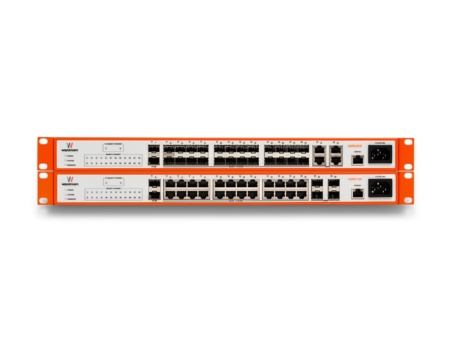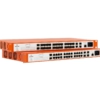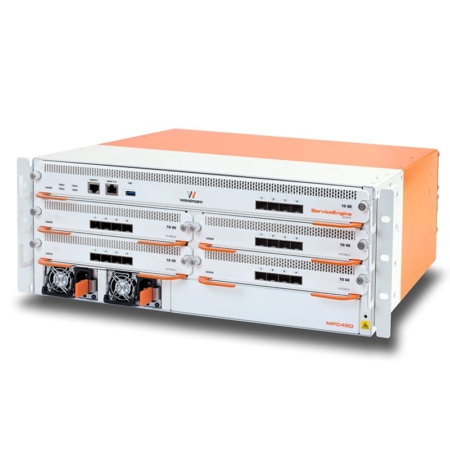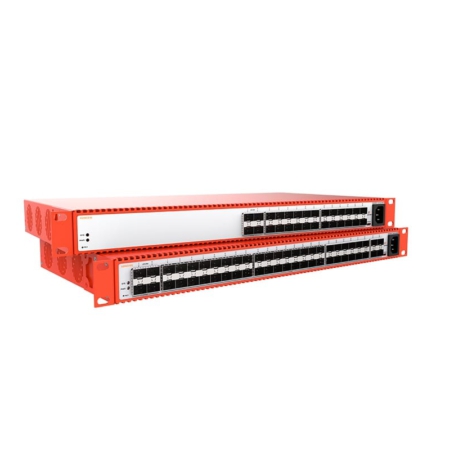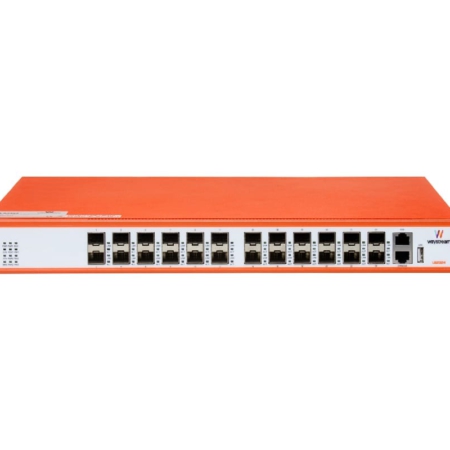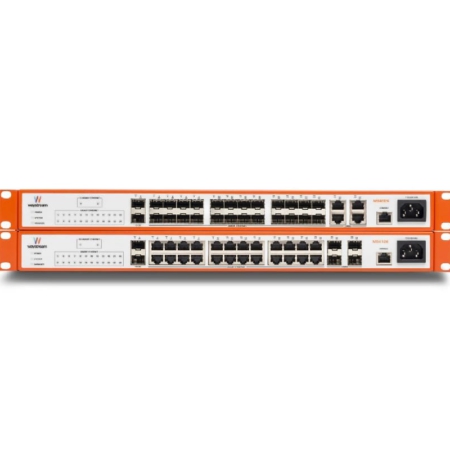Description
The ASR6000 is a Layer 3 Gigabit Ethernet access switch with wire speed switching and IPv4/IPv6 routing performance designed for data, voice and video service control. Using an onboard Network Processor, the ASR6000 delivers enhanced service functionality such as per client bandwidth ingress and egress shaping, weighted fair queuing scheduling with 2000 queues per client, quality measurement of MPEG TV and RADIUS controlled service templates.
- Reduced costs for operations
- Improved quality on services
- Easy access to all connectors via the front panel
- Simplified Gigabit transition with multi-rate SFP support and combo-ports
- Wire-speed routing and switching for both IPv4 and IPv6
Skript Motor
The programmable script motor allows customized and autonomous service control. Service conditions and behavior can be adapted to fit any type of existing service deployment structure used by operators. Existing RADIUS based mechanisms, used for xDSL, can be reused by the ASR6000 which reduces investment costs in the OSS system for service providers when new services are deployed in the network.
802.1x or DHCP messages activate a script in the ASR6000. The script uses programming logic to determine what actions to take.
Examples of script actions are:
- An authentication request may be sent to a RADIUS server, which can respond with attributes that the script converts into configuration parameters, such as bandwidth control.
- Content of DHCP server responses can be analysed – for example if an IPv6 prefix delegation option is present, a static route for the prefix can be installed by the script.
Service Templates
The ASR6000 supports the concept of service templates. A service template consists of the configuration commands to activate a particular service. When a trigger packet is received, the ASR6000 can interact with a central server to determine which service to activate for a client and then perform self-activation of configuration commands. This allows per-client defined service parameters, such as bandwidth and QoS.
Per-client bandwidth control with advanced scheduling
The ASR6000 has extensive classification rules to perform traffic management of individual clients. For local clients (connected on the Gigabit Ethernet ports), the NPU can provide further granularity and functionality. The NPU can use upto one Gigabyte of memory for packet buffers and other purposes. This enables proper queuing and traffic shaping with no packet loss which, in turn, gives better link- and network utilization of bandwidth for a smooth end-user experience – this is how end-users expect Internet services to work.
The NPU applies flow-based forwarding with thousands of virtual queues for proper weighted fair queuing and scheduling of traffic for connected clients. This makes it possible to create advanced, highly granular traffic management and QoS rules, even considering the application in use when deciding to queue, drop or forward traffic.
Quality improvements to TV
Particularly in Fibre-To-The-Home networks, TV distribution using IP multicast is commonplace. Networks are deploying hundreds of TV channels, yet the average high-speed access switch has modest packet buffers. If the multicast source (TV playout) generates a bursty media stream, then the combined load of unicast- and multicast traffic can cause buffer exhaustion and packet drop. This is then experienced by the end-user as a frozen picture, or even as a loss of the video service.
The ASR6000 is able to shape bursty multicast traffic using the NPU which will benefit any switch-based access network downstream of the ASR because the traffic pattern of the multicast stream is evenly distributed.
Quality inspection of TV
The ASR6000 can also inspect multicast MPEG transport streams, supporting MPEG over RTP as well as UDP. The ASR6000 collects and analyzes metrics at RTP level, Transport Stream level and Packetized Elementary Stream level.
The errors detected include:
- sequence-errors
- jitter
- missing-sync-byte
- misaligned
Any detected errors can be logged, read using SNMP, or shown by the ASR CLI. Each ASR becomes a probe, capable of monitoring up to 50 TV channels at the same time.
If an end-user reports a problem with the TV service, the RPM data provides immediate notification when a problem is seen in the network, and also if it affects the entire network, or just a part of the network.
This data may even help network engineers to pinpoint the location of the problem in seconds, instead of the usual hours, or even days, of manual troubleshooting.
Efficient use of IPv4 address space
In Layer 3 mode, each port on the ASR6000 can connect to a different end-user. Layer 3 ports towards a large population normally require heavy IPv4 sub-netting which rapidly consumes the shrinking IPv4 address pool.
The ASR6000 contains a set of features that allows an IPv4 subnet to be shared among end-user clients connected on different Layer 3 ports – even across multiple ASRs. Clients share a larger subnet and any traffic between clients within the subnet is routed through, and between, the ASRs. The result is a secure Layer 3 separation between end-users, a routed topology for easy network management, and maximum use of scarce IPv4 address space.
Support for dual stack services
The exhaustion of IPv4 addresses means that IPv6 deployment is now becoming mandatory in many networks. ASR6000 supports IPv6 unicast forwarding. Policies for traffic management and QoS also support IPv6 which means that a client can use either IPv4 and IPv6, or both.

